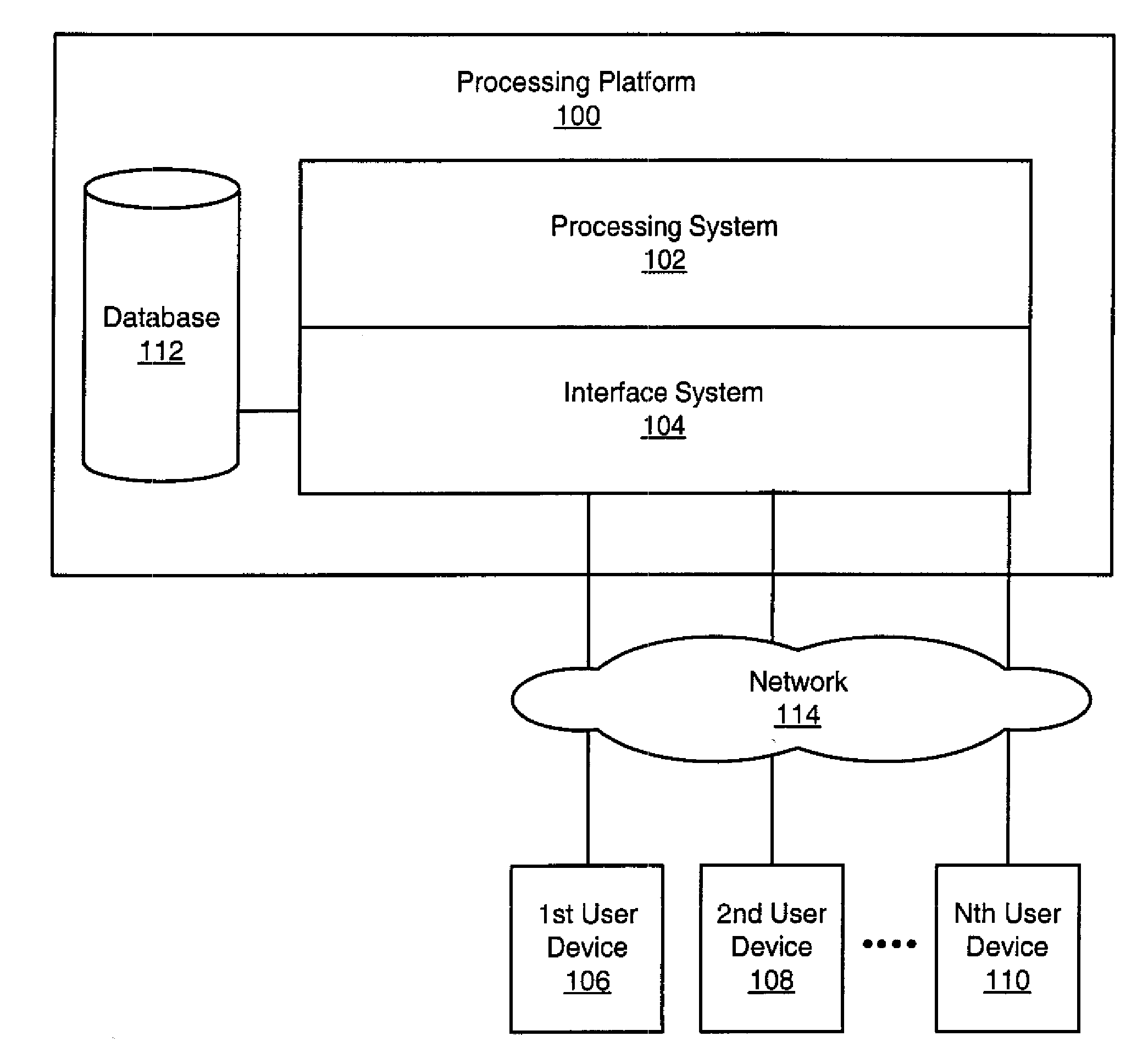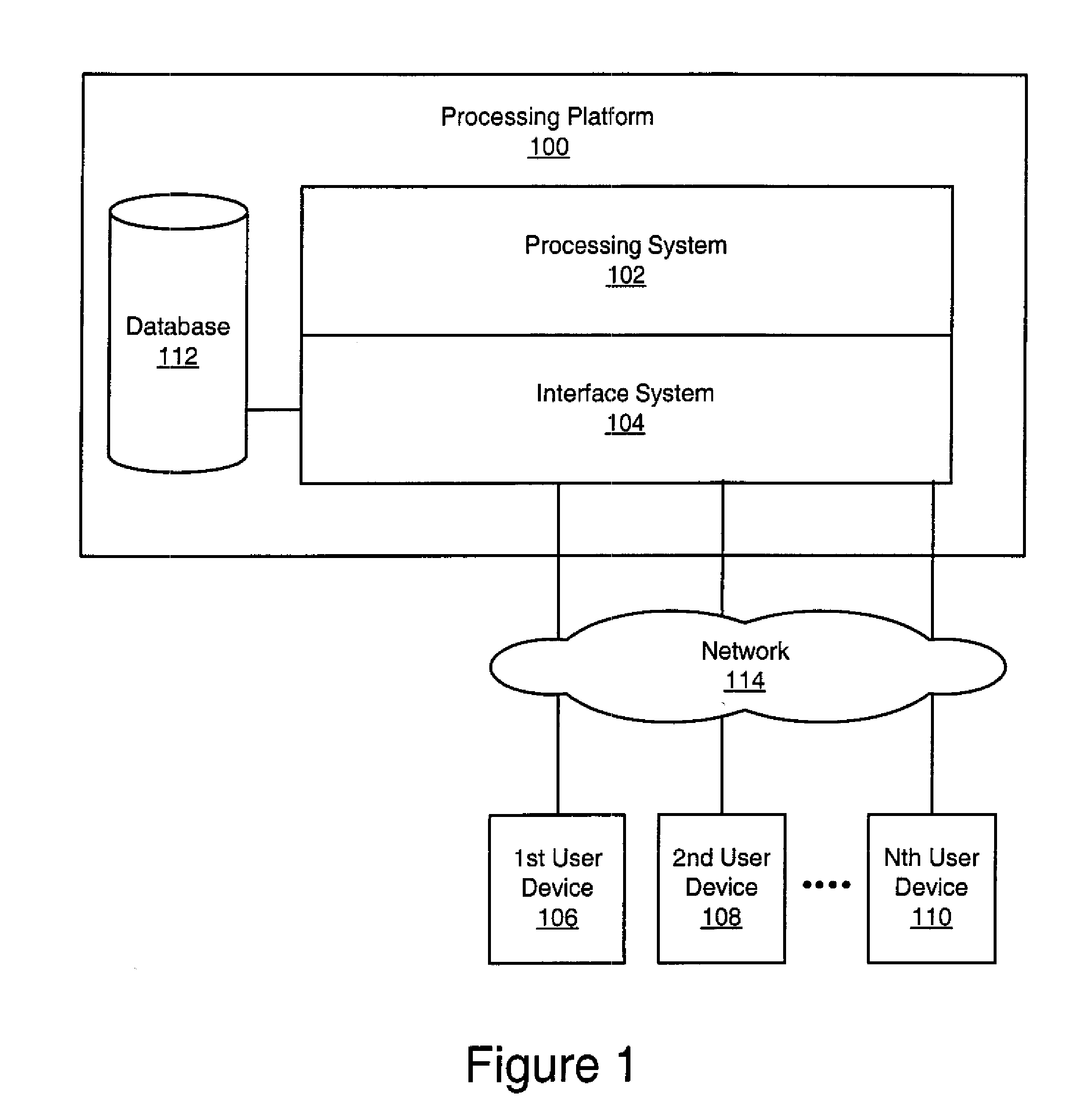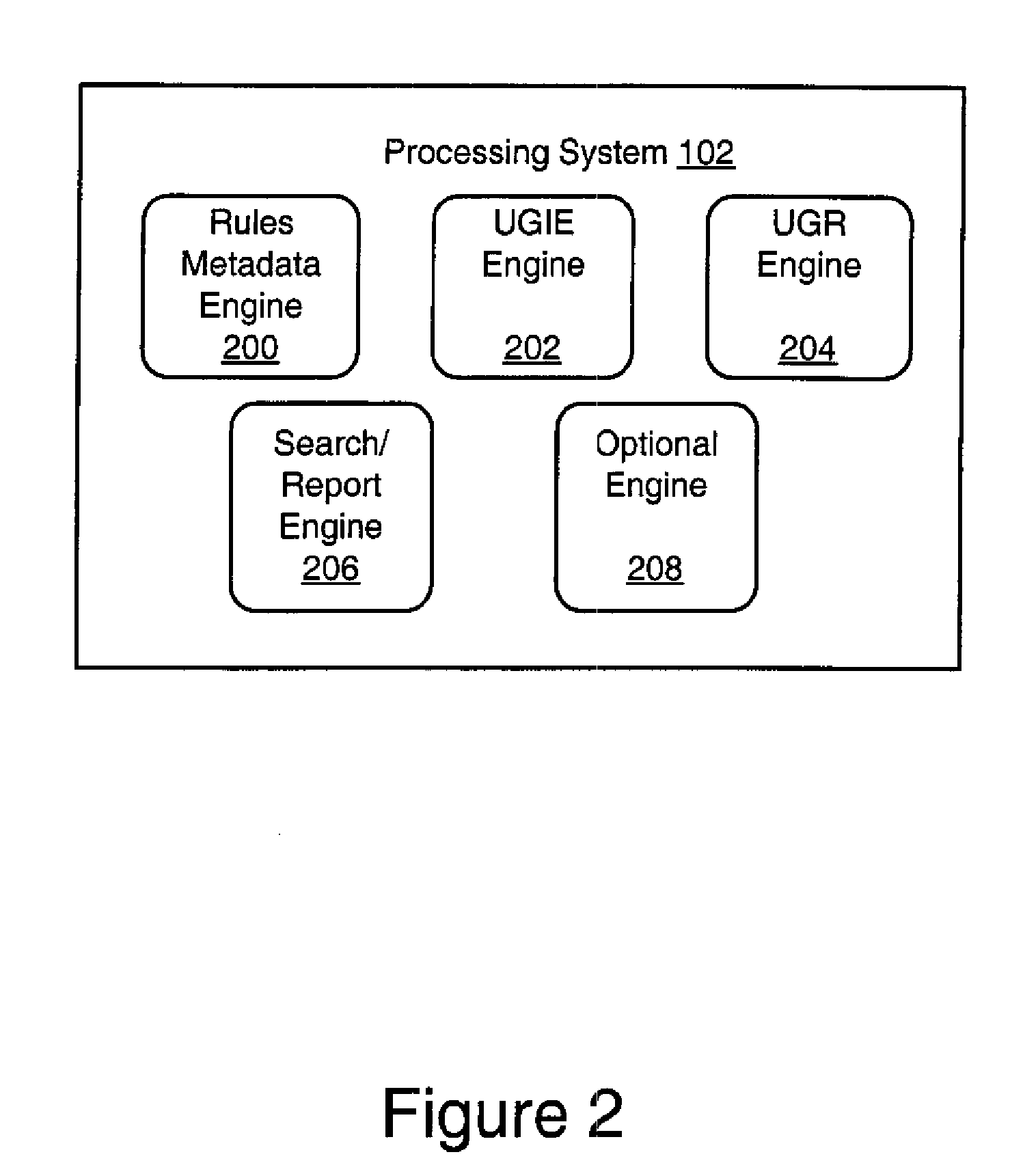[0006]In view of the foregoing, a broad object of the present invention is to provide a processing platform and related logic that improves acquisition of data and, in particular, acquisition of data of varying types from multiple sources and / or from multiple locations. A related object of the present invention is to provide a method by which users of the processing platform may define on a dynamic basis interface elements for acquiring such data in the processing platform. A related object of the present invention is to provide searching functionality based on the dynamically defined interface elements. A related object of the present invention is to provide a method by which users of the processing platform may define, on a dynamic basis, rules for acquiring such data in the processing platform. A further related object of the present invention is to provide seamless integration of the dynamically defined interface elements and rules into existing data acquisition software applications and distribution of the same over a network environment for use by network users. An additional object relates to implementing secure access to data based or access rules that are executed on a user-by-user basis.
[0007]In accordance with a first aspect of the present invention, a method and structure (collectively, “utility”) for capturing data using dynamically defined interface elements is provided. According to the present aspect, the utility permits users to define new interface elements for acquiring data in a data acquisition application, e.g., implemented in software, hardware and / or firmware. The application provides a plurality of defined interface elements for acquiring data of predetermined types, and allows for the definition of at least one new interface element (e.g., a new data field or data acquisition rule) by a user for acquisition of data other than the predetermined types accommodated by the plurality of defined interface elements. In the case of new data fields, such fields may define any attribute of the data such as name, date, substance symptoms, comments, etc. In the case of rules, the rules may relate to certain fields that are required or recommended to be populated, a desired sequence for data acquisition, or any other rule regarding data acquisition. Preferably, the rules are implemented so as to guide a user through a data acquisition procedure responsive to certain data inputs. (A second utility interface, separate from a data entry interface, may be utilized to define the rules / conditions under which the new data is to be acquired. This information is preferably associated with a “user control”. Such “user control” may be any non-overlapping group of one or more data fields. The portion of the interface that deals with defining the conditions is preferably metadata driven and configurable.
[0009]It should be noted that this utility for making new interface elements available across a network is applicable in contexts where the processing software is resident on the platform(s) receiving the new interface element information. In this regard, the process is fundamentally different from a web application where the software is run centrally on a web server, and changes to the software on the server affect all user devices (generally, no software is installed on the processing platforms except the browser). In accordance with the present invention, the software may have been installed on each processing platform. The software then receives a new capability to interpret “data”. The “data” is the resulting information (metadata) from either or both of the two utility functions described above. For example, the “data” may describe what additional fields are to be captured by the installed software, and the conditions / rules under which the data fields are to be captured (An example of a rule: Only capture this data if patient age is less than 65 years old). The “data” may be defined locally by users in control of the processing platform or defined by a central location and downloaded to the processing platform via network, or downloaded from any appropriate site. According to a further aspect of the present invention, a data acquisition application is implemented using a metadata model that allows for dynamic configuration of data acquisition fields and / or rules. The associated utility involves defining interface elements and storing metadata which holds information about the new additional fields to capture and their attributes. Examples of the attributes captured in metadata are: the type of data to be captured; whether the data is entered or selected from a pick list; is the data required to be filled in; whether there are further conditions which when met make the data required.
[0013]According to a still further aspect of the present invention, a utility is provided for allowing multiple levels of secure access to a single database. The database includes multiple data entries indexed by at least two parameters. For example, the database may be a relational database including two-dimensional tables, for example, where the columns of a table represent a data field (e.g., patient name, drug or substance, age, geographic location, etc.) and the rows of the tables specify certain attributes of the data (e.g., “John,”“Pesticide X,”“21 yrs.,”“Colorado,” etc.).
[0015]In this manner, access to and interaction with data in a single database can be flexibly controlled to define multiple access levels for multiple users or user groups based on highly granular subject matter limitations including subject matter limitations dynamically defined after application deployment. In the context of medical information applications, such as poison control center management, this allows for: limiting government access to information within its jurisdiction or to non-personal demographic information so as to enable desired analysis while addressing privacy concerns; limiting interaction by a particular company to information concerning its products so as to address competitive concerns; and limiting certain employee access to specified information to read only while allowing supervisor access to modify such data so as to facilitate proper administration and eliminate opportunities for fraud or error. Many other examples are possible. This may be executed in a manner analogous to the above noted field / attribute based searching based on a metadata model, where security level information operates like and, in some cases, in conjunction with, search criteria (though the security level information is generally specified by a trusted party separate from the user).
 Login to View More
Login to View More  Login to View More
Login to View More 


